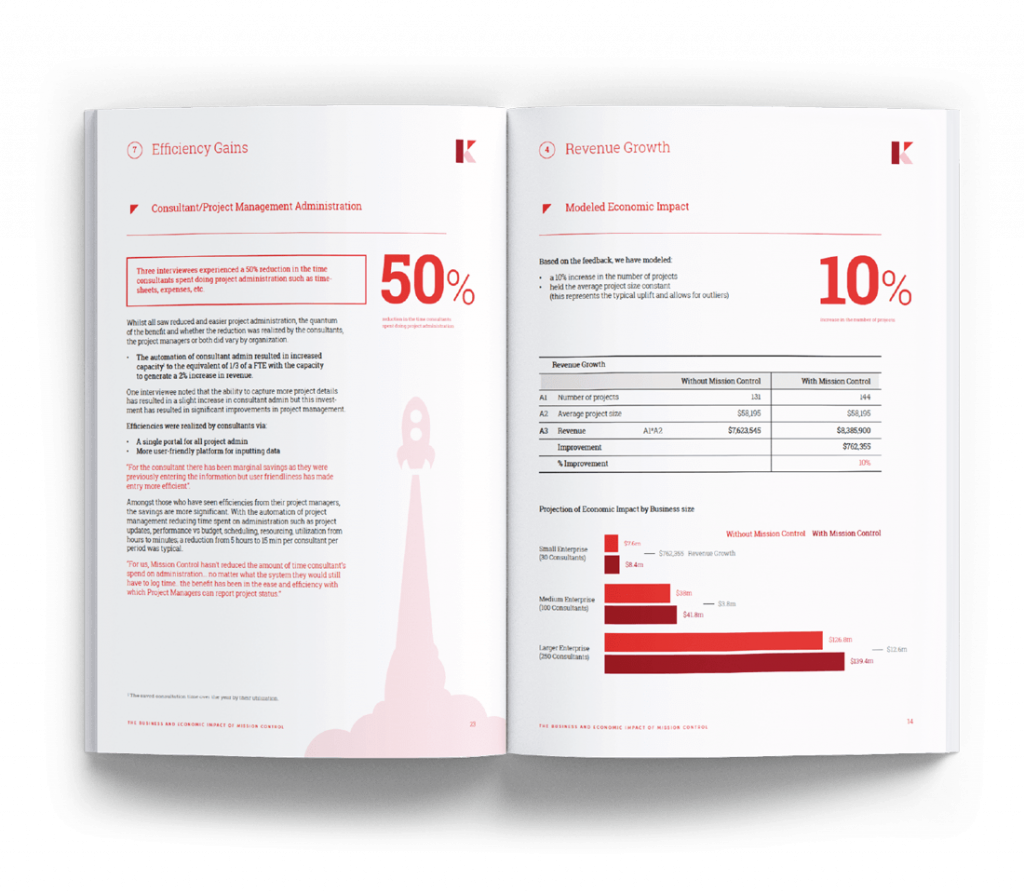Measuring resource utilization provides project managers with exact information on the billing efficiency and productivity of their projects. It helps you plan your resources better and drive profitability.
If you don’t understand your resource utilization rate, you’ll have no idea whether your resources are genuinely efficient and productive. Consequently, you won’t be able to evaluate the profitability of your business.
To figure out if your business is profitable, you need to determine if your resources are reaching their billable potential by calculating their billable utilization rate.
In this article, we’re going to explore:
- What billable utilization is and how to calculate it,
- What an ideal utilization rate is and how you calculate it,
- How to use Professional Services Automation to measure your billable utilization.
What is Billable Utilization?
For a project manager, understanding how your resources are utilized will help you know where and how time is spent. To increase revenue, you want your resources to spend most of their time on billable tasks. This is where billable utilization comes in.
Billable utilization is the number of hours a resource spends generating revenue. This rate is expressed as a percentage.
While the billable utilization rate is important for your business, you don’t want it to be too high or too low. When your billable rate is too high, you may have to charge your clients high rates that they’re not keen on paying. On the flip side, if your rate is too low, you may not be able to realize your profit margins.
So what’s the ideal billable rate? Let’s find out.
How to Calculate Billable Utilization Rates
Fortunately, the typical formula used to calculate billable utilization isn’t overly complicated:
The billable utilization formula explained
The basic formula is Total billable hours ÷ Total available working hours x 100.
To unpack this, let’s take an example of a developer who works eight hours a day, five days a week. Their availability is set to 40 hours per week.
Now let’s imagine that that developer can only bill for 34 hours instead of the set 40. This could probably be because they took a day off, or they were handling admin tasks. When calculating the developer’s utilization rate for that week, you’ll use the billable hours worked (32) divided by the set hours (40) and multiplied by 100.
So the formula here is 32 / 40 x 100 = 80. The developer’s utilization rate is, therefore, 80%.
In other words, only 80% of the developer’s time for that week can be charged to the client.
To work out your utilization rate at a company level—referred to as the capacity utilization—use this formula:
Total of all employee utilization rates / Total number of employees
The capacity utilization rate is an important figure as it illustrates how efficient the entire company is at utilizing its available hours. It’s also the rate that you use to calculate your ideal billing rate.
Using capacity utilization rate to calculate your ideal billing rate
Typically, this is how a business arrives at its billing rate:
(Resource costs + overhead + profit margin) / Total average labor hours
This formula, however, assumes that resources spent 100% of their time on billable hours. Realistically, this is impossible because there will always be time spent on non-billable work.
To cover for time spent on non-billable work, you have to add your capacity utilization rate into your equation. To get your ideal billing rate (all factors considered), use the formula:
(Resource costs + overhead + profit margin) / Total average labor hours / Capacity utilization rate
How to calculate your ideal utilization rate
While it’s okay to use an organization’s capacity utilization rate to work out an ideal billing rate, this assumes that the rate is a healthy one.
But is it?
That’s not always the case. Some businesses have very low capacity utilization rates hence resulting in a high billing rate. The ideal business situation is where the company makes the highest profits possible without overcharging the clients. This only happens when you have a healthy capacity utilization rate—which is your ideal utilization rate.
So what does a good utilization rate look like?
There isn’t a one-fits-all number. The ideal utilization rate varies from company to company. Rates vary by type of organization, role, business goals, and individual job functions. While industry standards suggest that employees should be able to achieve an 85% to 90% utilization rate, the actual average utilization rate is much lower at 60 percent.
That said, the formula for ideal utilization rate is:
(Resource costs + overhead + desired profit margin) / Total available hours x Target billable rate.
Your goal should be to constantly improve your ideal utilization rate so that you can achieve your target profit margin without charging your clients more. Do this by:
- Setting baselines for each resource. Share these target rates with your resources and allow them to take ownership of their rates. Find ways to keep resources positively motivated to hit their goals.
- Minimizing non-billable time. While non-billable tasks are important, too much non-billable time could indicate a lack of enough billable work to fill your pipeline or inefficiencies in internal processes that are causing excess administrative time. Take on as much billable work as possible to keep your resources well utilized. At the end of the day, you’ll pay your resources for time put in, whether it was billable or not.
Use Professional Services Automation to Measure Your Billable Utilization
The best way to improve your utilization rates is to gather good, accurate utilization data. These insights can then be used to forecast utilization more accurately, so you can plan ahead, empower your resources, and boost your profits.
With cold, hard data, you can create a resource utilization formula unique to your company. This will help you determine your ideal billable rates that won’t send your clients to your competition.
Collecting your resource utilization data may seem like a daunting process at first, but you can automate it with Professional Services Automation. A good PSA will help you to automatically track your team’s performance while avoiding the gruesome manual data entry and messy spreadsheets.
Automatic time tracking will ideally makes the process as easy and as accurate as possible. When you’re able to accurately record how your resources spend their time in a timely fashion, you’ll be able to clearly see how much time is going to both billable and non billable work.
Mission Control offers powerful features that will give your a clear picture of your organization’s resource utilization. With this kind of visibility, you can determine what actionable steps you can take to increase (or decrease) your utilization rates.
Use the Role Utilization feature for real-time data on how your human resources are performing. The feature gives you an overview of how many hours each resource is meant to work per week and compares it to the total hours logged for that week. With such data, it’s will be less complicated to set your ideal billable utilization rate and make adjustments where possible.
Contact us today for a demo of how Mission Control can help you utilize your resources to their fullest capacity.





